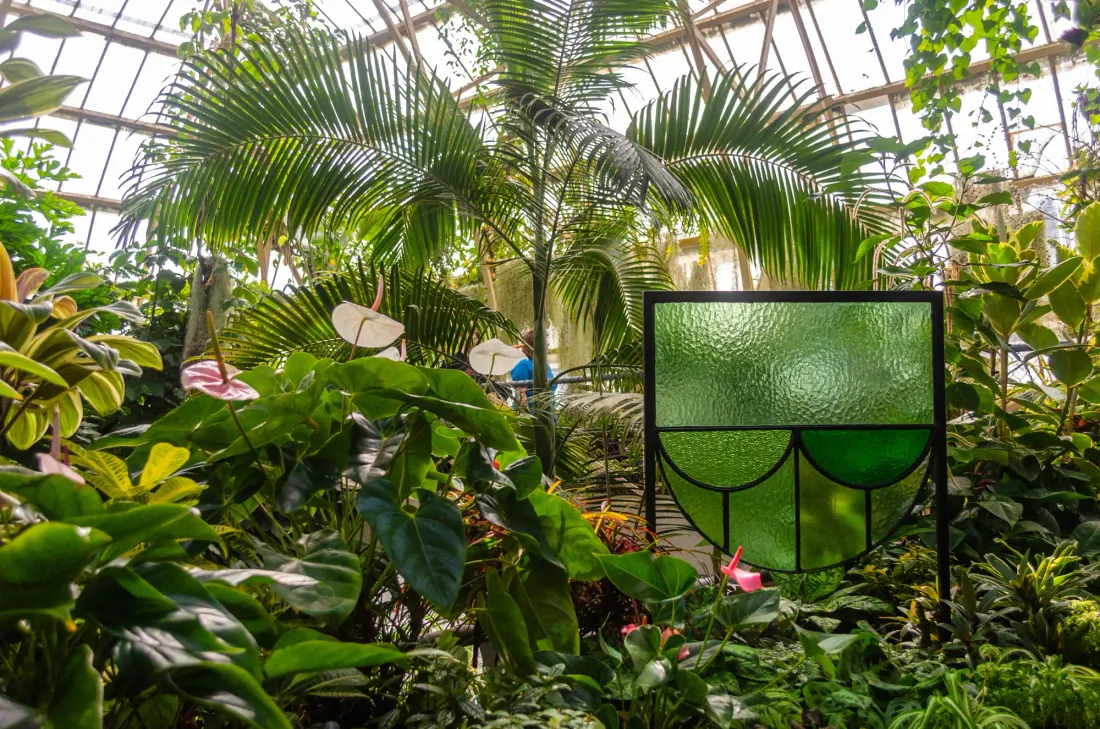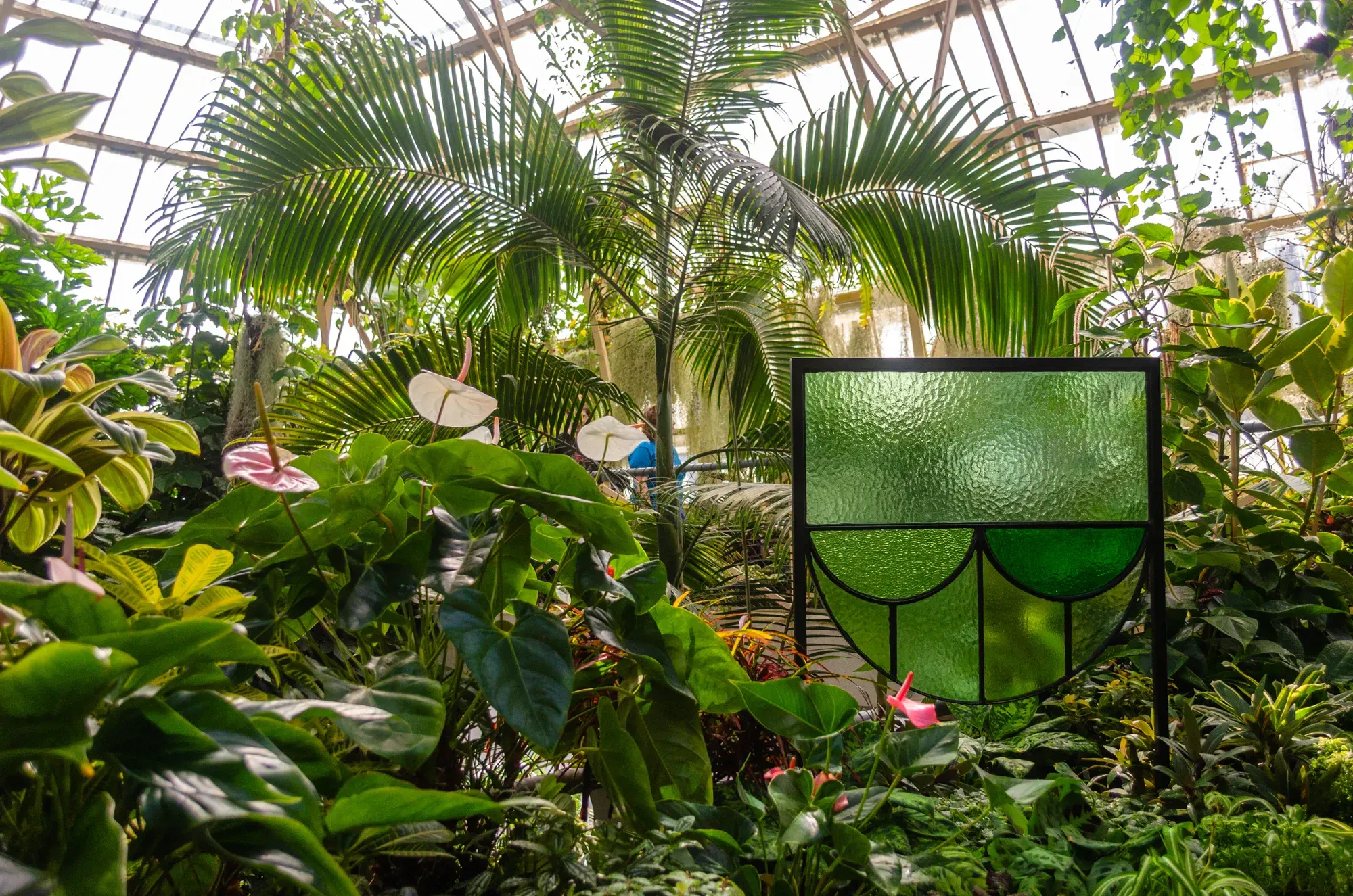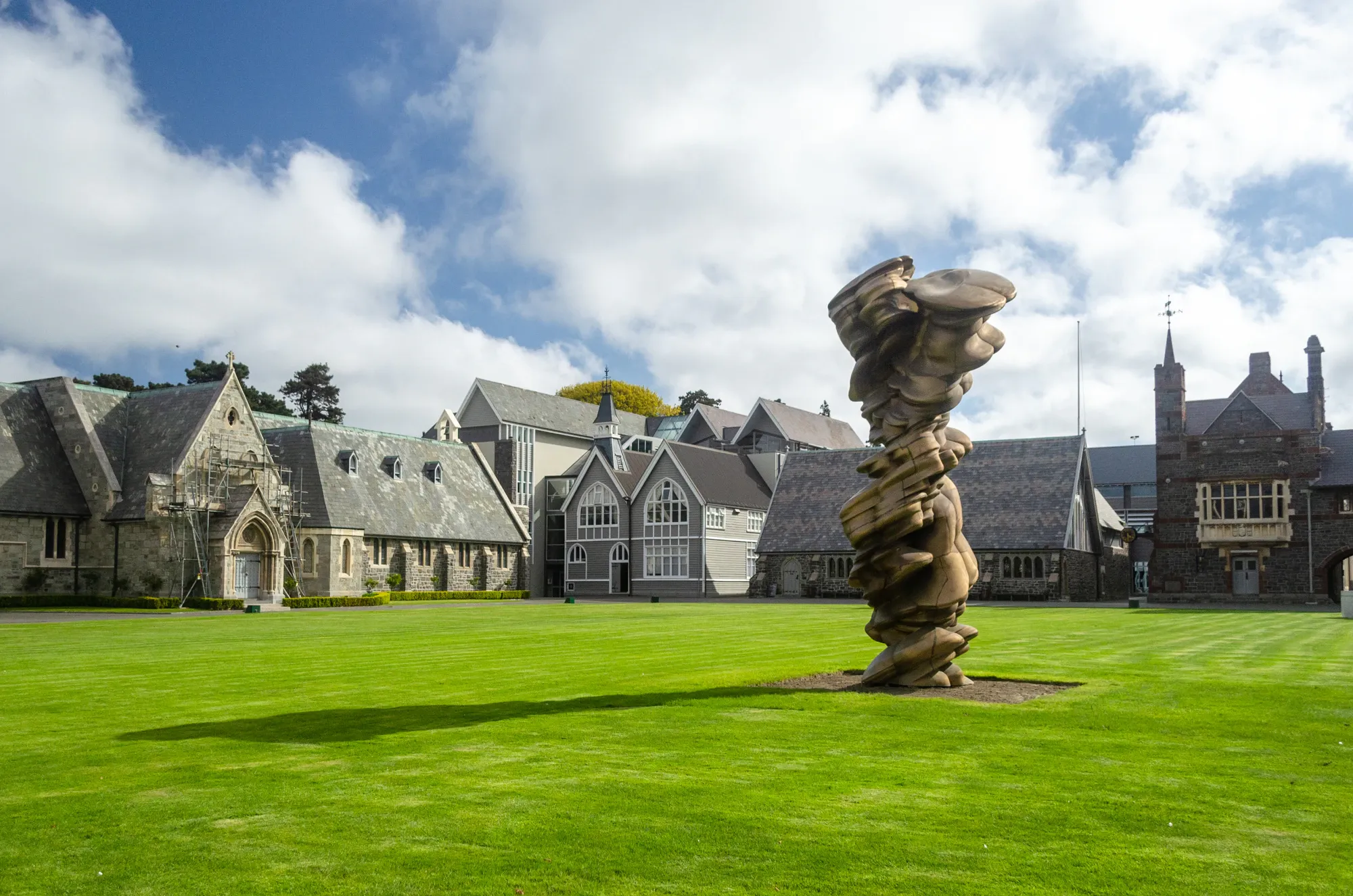Braiding the future: how to create a public art mecca
Written by


“The tapestry of understanding can not be woven by one strand alone. Only by the working together of strands and the working together of weavers will such a tapestry be completed. With its completion let us look at the good that comes from it and in time we should also look at those stitches which have been dropped because they also have a message.” So runs the proverb given by kaumātua Kukupa Tirikatene that inspired the theme for the 2018 SCAPE Public Art Season.
E kore e taea e te whenu kotahi
ki te raranga i te whāriki
kia mōhio tātou ki ā tātou.
Mā te mahi tahi ō ngā whenu,
mā te mahi tahi i ō ngā kairaranga,
ka oti tēnei whāriki.
I te otinga
me titiro tātou ki ngā mea pai ka puta mai.
Ā tana wā
me titiro hoki
ki ngā raranga i matere
nā te mea, he kōrero ano kei rera.
Our Braided Future weaves together a whole range of different art practices and ideas. Managing curator Heather Galbraith explains that “Canterbury’s braided rivers fit perfectly with these ideas because of their troubled ecology that is subject to the forces of human habitation. The theme brings these ideas together to talk about the bumpy existence of Christchurch Ōtautahi, and how artworks can voice the human experience of contemporary conditions.”
Being the 20th Anniversary year, Heather wanted to highlight a wide spectrum of projects that have taken place; to create a season that resembles a fabric woven out of various projects, old and new, spanning the history of SCAPE seasons. Four works from previous SCAPE iterations have made their way back for the 20th Anniversary, including Caroline Rothwell’s Kotuku, Paul Hartigan’s Alphabetica Redux, Michel de Broin’s Encircling, and Nathan Pohio’s Raise the anchor, unfurl the sails, set course to the centre of an ever setting sun!. Heather says, “Michel’s work is a circular never-ending race track or cycleway which is wonky and uneven — it seems to express something perfectly appropriate about the craziness of urban development and the recovery of infrastructure within Ōtautahi. It had a set of associations when it was first exhibited, but now it’s accrued a whole lot more because of the crazy conditions that we're still faced with as we try to traverse the city.”

Hannah Beehre painting Tunnel. Photo provided by SCAPE. Portrait by Emanuella de Ruiter
While Heather recognises that it is important to pay homage to past works, she also felt it was important to support the generation of new works by both emerging practitioners and more seasoned artists. Local artist Hannah Beehre certainly fit the bill with her new works Tunnel and Orion. Tunnel is Hannah’s first fully immersive artwork where visitors will be able to traverse through a nebula, complete with glistening stars, from one part of the Canterbury Museum to another. Heather says, “it’s both entrancing but also slightly foreboding entering into a tunnel when you can't see your way out — you’re entering into a void that is a bit unknown and it’s taking you somewhere you haven’t experienced before.”
Hannah says that she has always had a curiosity for the boundary between fantasy and logic because her mother was a minister of religion and her father was a science teacher. “I want to generate a kind of quasi-religious experience based on the natural world: to me the Hubble Space Telescope Images really look like some of the early religious paintings of heaven and hell. I want to suggest monsters, and the terror when faced with something really huge or sublime to come through in my artwork. For me the experience of the quake was a monstrous event, so I’m trying to remove the veil of everyday life for people in this city. In a way it is storytelling; I’m suggesting an alternate reality.”
“I want to generate a kind of quasi-religious experience...the Hubble Space Telescope Images really look like some of the early religious paintings"
Made with dyed velvet, acrylic paint, mirrors, Swarovski crystals, and fibre optics, Tunnel is multifaceted and perpetually changing. Hannah says “this piece is really tactile, and it almost encourages you to touch it. When you push the pile around it changes the work — it’s going to be constantly changed by the viewers so each time you come back it will be slightly different.” Hannah embraces the fact that by exhibiting work in the museum she is making work for a different type of audience. “In the gallery you generally understand you're not supposed to touch the work, but museum exhibits are usually more interactive.”

Town End Door Mirror, 2018, Erica van Zon. Photos by Emanuella de Ruiter
Wellingtonian Erica van Zon is another artist featured in SCAPE 2018 and has created her new work Verdant Geometry for the Christchurch Botanic Garden’s Cuningham House. There are six steel and glass sculptures inhabiting Cuningham House placed among the wonderfully leafy tropical plants. Erica says, “the work references both the neoclassical architecture of the space that is offset by renovations in the ‘80s or ‘90s, and the green colour palette.” At the entrance to the glasshouse Erica has placed a sculpture to welcome people into the space and to alert them to the artwork inside. “I’ve created an archway that's made out of tubular steel and it’s painted a bright green — it’s inspired by a canopy that I saw on a building on Nelson Street in Auckland.” Inside, by the banana grove, there is a sculpture made of mirrors and powder-coated steel. Erica says “it’s apparently where heaps of teenagers take selfies — so it might add something fun to the mix. The thing I love about this place is that it is completely a captured audience; they've gone to the gardens for whatever reason, and will be faced with seeing my art whether they like it or not!”
"...they've gone to the gardens for whatever reason, and will be faced with seeing my art whether they like it or not!”
One of Erica’s major inspirations for her work is an early ‘80s interior design book by Joseph Conrad that she had noticed popping up in various op-shops. “It's a book that you look at with a nostalgic eye because pre-internet or pre-computerised design this would have been your go-to reference book. It has some really great window designs on the front of it, which I've replicated in my work and have painted in this acid green.”
While Erica’s recent work references architecture, it’s also about creating “common ways of seeing” and allowing people to find connections to the work from within their own lives. “I'm really into making spaces feel welcoming for people so they don't feel alienated from the artwork — it might be a case of you’ve got that type of window, or that front door in your home, or that you remember seeing the light in that way before. I hope that they'll understand the sense of nostalgia and notice details of their own everyday life in the work.”

Mixed Feelings, 2012, Tony Cragg. Photo by Emanuella de Ruiter
Tony Cragg’s monumental sculpture Mixed Feelings is at home in the Christ’s College quadrangle, just North of the Canterbury Museum, for SCAPE 2018. Tony is an internationally renowned sculptor and Heather says she was excited to have the chance to bring his eminent work here all the way from Germany. “It's quite rare that we get to see works of this scale by international artists of his calibre in New Zealand.” While the title of the work has something very appropriate to say with regard to life in Christchurch at the moment, Heather says this is not the only reason she was adamant to include it in the 2018 Season: “It has this incredible kind of torquing tension of the two columns wrestling with each other… I felt like it might have something interesting to say in terms of dynamics and forces that are at play, not just in relation to the land, but also in terms of social encounters and human experience.”
The 20th Anniversary of the SCAPE Public Art Seasons has a lot to offer visitors to Christchurch. Not only will they be able to enjoy an abundance of compelling artworks by a range of both local and international artists, but they will also be able to take part in a wealth of public programmes. Opening weekend activities include a special one-night-only live drawing Alphabetica Redux by Paul Hartigan on Friday night, various guided tours, a Gala dinner on Saturday night, and artist talks.